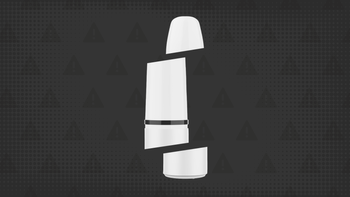
Nicotine Replacement Therapy: Your GoodRx Guide to NRT Products
Key takeaways:
There are four nicotine replacement therapy (NRT) products available to help people quit smoking. Nicotine gum (Nicorette), lozenges (Nicorette), and patches (Nicoderm CQ, Habitrol) are available over the counter (OTC). The nicotine nasal spray (Nicotrol NS) is prescription-only.
NRT works by replacing the nicotine your body has been getting from cigarettes with “clean nicotine.” This means it doesn’t contain the other harmful chemicals in cigarettes. NRT helps relieve withdrawal symptoms and cravings that can occur while you’re trying to quit smoking.
All NRT products improve your chances of successfully quitting smoking. But combining the nicotine patch with a fast-acting NRT product (like gum or lozenges) is more effective than using any single NRT product on its own.
Access savings on related medications
Table of contents

Quitting smoking is no easy task. Both the habit and physical nicotine addiction can be hard to overcome. But quitting smoking has major benefits for your health. It can help your heart and lungs recover, lower your risk of some cancers, and boost your immune system.
If you’re interested in quitting, nicotine replacement therapy (NRT) can help. In fact, it's one of the most effective methods to stop smoking. There are multiple NRT products to choose from, and it’s usually best to use more than one. Here, we’ll cover everything you need to know about NRT, including how to combine NRT products for the greatest chance of success.
What is nicotine replacement therapy (NRT)?
NRT is one category of medications designed to help you quit smoking by relieving the physical and mental discomfort that often comes along with this process.
There are multiple types of NRT to choose from. We’ll cover all of your options a little later in this article.
How does NRT work?
Essentially, the purpose of NRT is to replace the nicotine from cigarettes with “clean nicotine”. This means that NRT contains nicotine without the hundreds of harmful chemicals found in cigarettes.
Using NRT helps minimize nicotine withdrawal symptoms and cravings to smoke. Having fewer uncomfortable feelings while you’re trying to stop smoking increases your chances of success.
Although NRT products are effective at helping people quit smoking, they aren’t meant to be used forever. Just how long you’ll need NRT depends on several factors, so it’s best to work with a healthcare professional to tailor your treatment to your individual situation.
Which NRT products are available?
Some NRT products are available over the counter (OTC). These include:
Even though these products are OTC, it’s a good idea to work with a healthcare professional or join a smoking cessation program to assist you in using them effectively. People who have additional support usually have more success quitting.
The only NRT medication that requires a prescription is a nasal spray (Nicotrol NS). Previously, a nicotine inhaler was available but it was discontinued in 2023 due to manufacturing supply issues.
Below, we look at each type of NRT product in detail.
How to get nicotine patches: Whether you have insurance or not, find out how to get nicotine patches to help you quit smoking at a low-cost — or even for free.
How to use nicotine lozenges: This NRT product is safe and effective, but it’s important to know how to use them to get their full benefit and avoid side effects.
Prescription medications for smoking cessation: Bupropion sustained-release (Wellbutrin SR) and varenicline (Chantix) are prescription-only pills that help people quit smoking. Learn whether one of these medications may be a good option for you.
Nicotine patches
Nicotine patches are the only long-acting form of NRT. The nicotine in the patch is steadily absorbed through your skin at a slow, steady rate while you wear it. Because nicotine patches don’t release nicotine to the body quickly, they don’t help much with in-the-moment cravings. Rather, they provide your body with a steady level of nicotine all day long to help minimize nicotine withdrawal symptoms.
Typically, you’ll apply a patch to your skin each morning and leave it on all day. In most cases, you can forget about the patch until you replace it the following morning. However, some people may have vivid dreams or trouble sleeping while wearing the patches. If this happens to you, you can take off your patch at bedtime. Then, put a new one on when you wake up.
Nicotine patches are available in 7 mg, 14 mg, and 21 mg doses. A healthcare professional can help you choose the right nicotine patch dosage based on how many cigarettes you smoke each day.
Nicotine gum and lozenges
Nicotine gum and lozenges can help when you feel a nicotine craving coming on. The nicotine in these products is absorbed through the mouth. It kicks in faster than the patch. So these products provide quick relief from cravings and other withdrawal symptoms. And you can use nicotine gum or lozenges multiple times throughout the day.
Both products are available in doses of 2 mg and 4 mg. The best dose for you depends on whether or not you smoke first thing in the morning (within 30 minutes of waking). If you do, the 4 mg dose is typically recommended. If your first cigarette is later in the day, the 2 mg dose may be sufficient. You can use up to 24 pieces of gum or 20 lozenges per day.
Keep in mind that how often you use the nicotine gum or lozenge, and what dose you use, is adjustable. That’s why working with a healthcare professional to quit smoking is helpful. Let them know whether your nicotine cravings and withdrawal symptoms are manageable. If they aren’t, they may recommend increasing your NRT doses or using them more often.
Nicotine nasal spray
Like the OTC gum and lozenges, the nasal spray is a short-acting NRT product. So it’s used throughout the day.
The nicotine in this product is absorbed through the nose. Two sprays (one in each nostril) equals one dose. For best results, use at least 8 doses a day. But don’t use more than 40 doses per day (and a maximum of 5 doses per hour).
Is one NRT product better than another?
First, it’s important to note that the research is clear on the benefits of using NRT. Using NRT can increase your chances of successfully quitting smoking by 50% or more.
But the best NRT product for you is one that meets your specific needs and lifestyle. When comparing the long-acting nicotine patch alone versus a fast-acting NRT product (nicotine gum, lozenge, or nasal spray), research hasn’t found that one is better than the other at helping people quit smoking. However, studies do show that using more than one NRT product increases your chances of successfully quitting smoking. The most common combination is the nicotine patch plus a fact-acting NRT product. We’ll talk more about combination therapy in the next section.
When choosing an NRT product, consider your personal preferences. For example, if you don’t like the idea of using gum or lozenges, the nasal spray may be a better fast-acting option.
Depending on your insurance coverage and where you purchase your NRT products, cost differences may also be a factor to consider.
Can you combine NRT products?
As mentioned, combining NRT products gives you a better chance of quitting smoking than using one NRT product alone (or not using any medications at all).
There have been studies on combining the patch and nasal spray. There are also studies on combining gum or lozenges with the patch. And the research is clear: Combining a long-acting form of NRT (the patch) with a fast-acting product (all other forms of NRT) is more effective than using any single product alone.
Why does combination therapy work better than using one NRT medication alone? The patch provides a steady dose of nicotine throughout the day, but you can’t adjust that dose quickly when a craving hits. This is where fast-acting NRT products can help. The nicotine gum and lozenge deliver nicotine to the brain within a few minutes of using them. And the nasal spray works even faster. So these fast-acting products are more effective than the patch for in-the-moment cravings that arise throughout the day.
What are the side effects of NRT?
NRT products can have side effects. Some NRT products may be more likely to cause side effects than others. These side effects are often due to nicotine itself, and include:
Headache
Increased blood pressure
Heart palpitations
Chest pain
Nausea
Stomach problems
Trouble sleeping
Dependence and misuse
Nicotine withdrawal (if stopped abruptly), such as irritability, nicotine cravings, and restlessness
Each NRT product also carries a risk of unique side effects, some of which are a result of how the product is used. Examples for each NRT product include:
Patches: skin irritation, vivid dreams
Gum and lozenges: heartburn, hiccups, sore throat
Nasal spray: peppery feeling in the nose or back of the throat, sneezing, coughing
Sometimes, experiencing NRT side effects may mean your dose is too high. For example, if you feel extremely nauseous or your heart is racing, it may be because there’s too much nicotine in your system. Talk to a healthcare professional if you experience side effects from NRT products. They can help you adjust your dose if needed.
Are NRT products addictive?
Even though NRT products contain nicotine, which is an addictive substance, becoming addicted to them is unlikely.
One reason cigarettes are so addictive is that it only takes seconds for the nicotine to reach the brain. NRT products are less likely to be addictive because they contain less nicotine and they’re absorbed more slowly — over minutes (short-acting products) to hours (nicotine patches).
How long do you need NRT?
Most people need to continue NRT for at least 6 to 8 weeks, and often longer. But if you’ve been using NRT for 8 to 12 weeks and haven’t fully quit smoking, or still feel like you need NRT, talk with a healthcare professional. They can help you decide if it’s a good idea to continue treatment, or try another medication.
Over time, the amount of NRT products you use should be decreased as your body adjusts to not smoking. Eventually, you should be completely nicotine-free.
Who should talk to a healthcare professional before trying NRT?
Some people may be more likely than others to experience side effects from NRT. Talk to your healthcare team before starting NRT if you:
Are pregnant or nursing
Are a teenager
Have had a heart attack in the last 2 weeks
Have chest pain or serious heart problems
Have stomach ulcers
Have lung problems
What else can you try to help you quit smoking?
Besides NRT, bupropion sustained-release (previously known as Zyban) and varenicline (previously known as Chantix) are medications approved for smoking cessation. According to available research, the most effective options for smoking cessation seem to be Chantix alone or combination NRT.
Bupropion can be combined with NRT products, though research hasn’t found an added benefit compared to combination NRT therapy on its own. Although Chantix isn’t FDA approved to be used with NRT products, some evidence shows this combination may be beneficial.
The best plant to quit smoking involves using medications and joining some type of smoking cessation program. Non-medication methods, like smartphone apps and behavioral therapy, can also help. And help doesn’t need to be in person. Several smoking cessation programs and support methods are available via text, email, or phone.
The National Quitline (1-800-QUIT-NOW) offers free support. You can also check your local quitline, which is a telephone-based service that’s available in every state.
Can vaping help you quit smoking cigarettes?
There’s a lot of controversy on this topic. In short, while it’s possible that nicotine-containing e-cigarettes (also called vapes) could help you quit smoking, they’re not widely recommended at this time.
Some research shows vaping may be more successful than combination NRT, and as successful as varenicline, at helping people quit smoking. But even if e-cigarettes help you quit smoking traditional cigarettes, research shows that vapes can still be harmful, especially to the heart and lungs. This is because vaping may expose you to harmful substances. At this time, e-cigarettes aren’t FDA approved NRT products.
In recent years, the FDA has authorized the marketing of many different e-cigarette and vaping products. But being authorized for sale doesn’t mean the FDA has approved these products for smoking cessation or evaluated their safety.
The bottom line
Nicotine replacement therapy (NRT) products are an effective way to help you quit smoking. They work by replacing the nicotine from cigarettes with “clean nicotine,” which helps manage cravings and withdrawal symptoms.
There are five FDA-approved NRT products on the U.S. market. Nicotine gum, nicotine lozenges, and nicotine patches are available over-the-counter (OTC). The nicotine nasal spray and nicotine inhaler are available by prescription only.
A combination of the nicotine patch and a fast-acting NRT product (like gum or lozenges) is better at helping people quit smoking than any NRT product used alone. But all NRT products work better if they’re combined with a smoking cessation program.
If you’re interested in trying NRT, talk to your healthcare provider or pharmacist about the best products and doses for you.
Why trust our experts?


References
American Heart Association. (2023). Current evidence identifies health risks of e-cigarette use; long-term research needed.
Blondal, T., et al. (1999). A nicotine patch plus nicotine nasal spray was more effective than a nicotine patch alone for smoking cessation. Therapeutics.
Bohadana, A., et al. (2000). Nicotine inhaler and nicotine patch as a combination therapy for smoking cessation: A randomized, double-blind, placebo-controlled trial. Archives of Internal Medicine.
Centers for Disease Control and Prevention. (2022). How quit smoking medicines work.
Centers for Disease Control and Prevention. (2022). How to use nicotine gum.
Centers for Disease Control and Prevention. (2022). How to use nicotine lozenges.
Centers for Disease Control and Prevention. (2022). How to use nicotine patches.
Centers for Disease Control and Prevention. (2022). How to use the nicotine nasal spray.
Centers for Disease Control and Prevention. (2022). Quit smoking medications are much safer than smoking.
Centers for Disease Control and Prevention. (2022). Why quitting smoking is hard.
Centers for Disease Control and Prevention. (2023). Quitlines and other cessation support resources.
Chang, P. H., et al. (2015). Combination therapy of varenicline with nicotine replacement therapy is better than varenicline alone: A systematic review and meta-analysis of randomized controlled trials. BioMed Central Public Health.
Hartmann-Boyce, J., et al. (2018). Nicotine replacement therapy versus control for smoking cessation. Cochrane Database of Systematic Reviews.
Leung, M. K. W., et al. (2019). Combined nicotine patch with gum versus nicotine patch alone in smoking cessation in Hong Kong primary care clinics: A randomised controlled trial. BioMed Central Public Health.
Lindson, N., et al. (2019). Different doses, durations and modes of delivery of nicotine
replacement therapy for smoking cessation. Cochrane Database of Systematic Reviews.
Lindson, N., et al. (2023). Pharmacological and electronic cigarette interventions for smoking cessation in adults: Component network meta‐analyses. Cochrane Database of Systematic Reviews.
Piper, M. E., et al. (2009). A randomized placebo-controlled clinical trial of 5 smoking cessation pharmacotherapies. Archives of General Psychiatry.
U.S. Food and Drug Administration. (2021). FDA permits marketing of e-cigarette products, marking first authorization of its kind by the agency.
U.S. Food and Drug Administration. (2023). Facts about e-cigarettes.
Wadgave, U., et al. (2016). Nicotine replacement therapy: An overview. International Journal of Health Sciences.
Was this page helpful?
Related Articles
Browse medications
View AllResearch prescriptions and over-the-counter medications from A to Z, compare drug prices, and start saving.




























